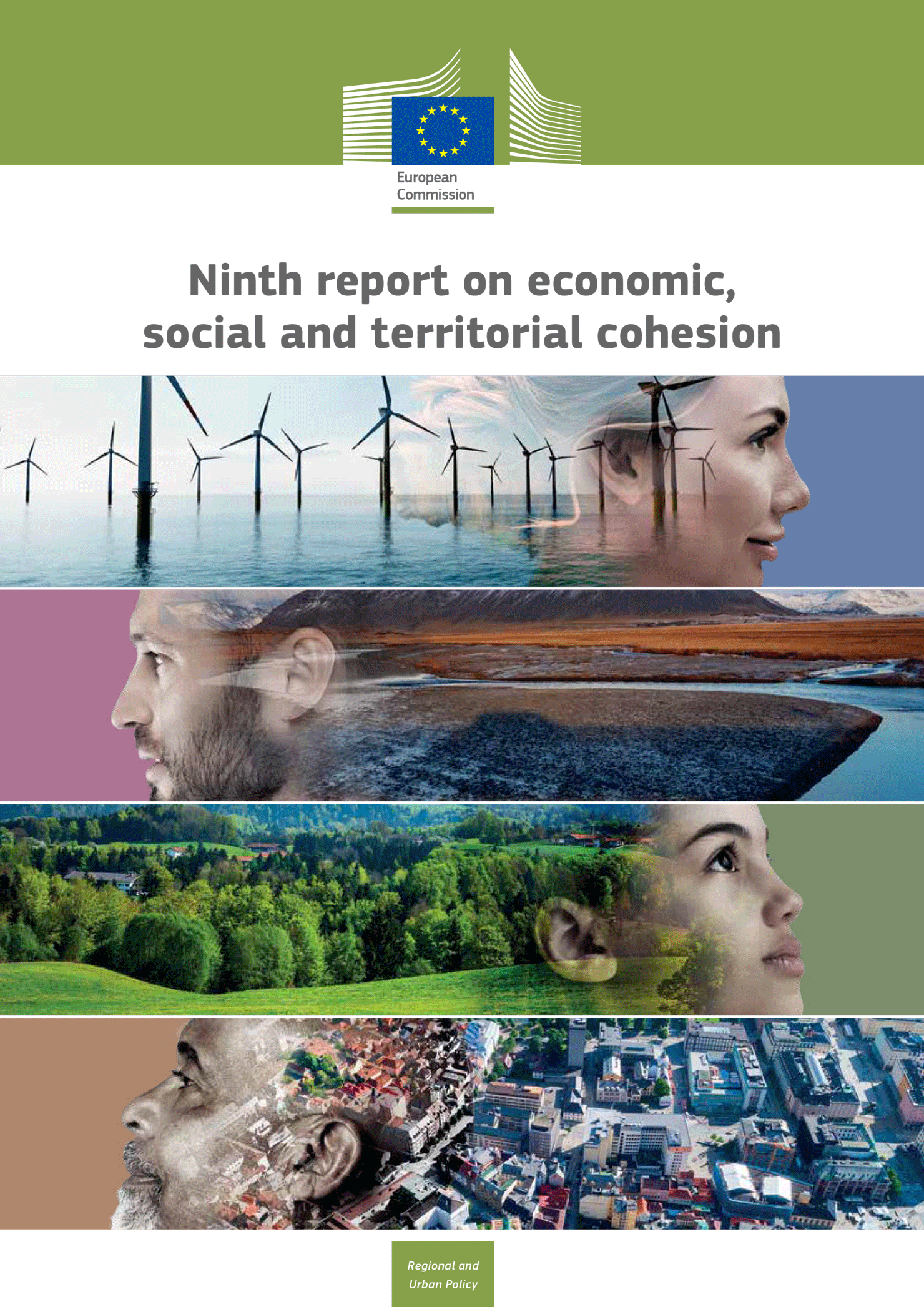Ninth Report on Economic, Social and Territorial Cohesion
 The Commission published the 9th Cohesion Report on
27 March, presenting an assessment of the state of cohesion in the Union.
The Commission published the 9th Cohesion Report on
27 March, presenting an assessment of the state of cohesion in the Union.
Since its creation, the European Union rests on an ideal of solidarity, equal opportunities, and cohesion. This is why the Treaty of Rome set the goal of “reducing the differences existing between the various regions and the backwardness of the less-favoured regions.”
The enlargement of 2004 is emblematic of the success of Cohesion Policy. 20 years after the 2004 enlargement the EU’s Cohesion Policy has led to remarkable convergence. In Central and Eastern Europe as a whole, income per head increased from 52% of the EU average in 2004 to nearly 80% today. At the same time, their unemployment rate has dropped from 13% to 4%.
In stark contrast with the 2009 recession, GDP has strongly rebounded after the pandemic outbreak. However, the pace of economic convergence has persistently slowed down after the 2009 recession. The impact of the 2009 recession on convergence, investment and GDP has indeed been a major and persistent one.
In this difficult context, Cohesion Policy has played a pivotal role in the overall improvement of economic, employment and social indicators in the EU. Cohesion Policy plays a key role in supporting public investment. During the 2014-2020 period, the policy represented almost 13% of total government investment in the EU as a whole, and 51% in less developed Member States. These investments have strengthened the European growth model, spurring economic growth in line with key policy priorities from the twin transition to innovation, business, and skills, from childcare, education and health to protection from natural disasters. However, challenges remain and untapped potential and pockets of poverty can be found in every region.
Demographic changes will affect all regions in the coming decades. Regions will have to adjust to a shrinking labour force, an ageing population. The challenges tend to be more acute in rural and thinly populated regions. Similarly, the effects of the digital transition and climate change are likely to exacerbate regional disparities in the EU.
Within this context, the need to ensure economic cohesion, which has been enshrined in the EU since The Treaty of Rome of 1957, remains as relevant as ever.
Documents
-
DownloadБългарски
-
DownloadČeština
-
DownloadDansk
-
DownloadDeutsch
-
DownloadΕλληνικά
-
DownloadEspañol
-
DownloadEesti
-
DownloadSuomi
-
DownloadFrançais
-
DownloadHrvatski
-
DownloadMagyar
-
DownloadItaliano
-
DownloadLatviešu
-
DownloadLietuvių
-
DownloadNederlands
-
DownloadPolski
-
DownloadPortuguês
-
DownloadRomână
-
DownloadSlovenčina
-
DownloadSlovenščina
-
DownloadSvenska
-
DownloadБългарски
-
DownloadČeština
-
DownloadDansk
-
DownloadDeutsch
-
DownloadΕλληνικά
-
DownloadEspañol
-
DownloadEesti
-
DownloadSuomi
-
DownloadFrançais
-
DownloadHrvatski
-
DownloadMagyar
-
DownloadItaliano
-
DownloadLatviešu
-
DownloadLietuvių
-
DownloadNederlands
-
DownloadPolski
-
DownloadPortuguês
-
DownloadRomână
-
DownloadSlovenčina
-
DownloadSlovenščina
-
DownloadSvenska
